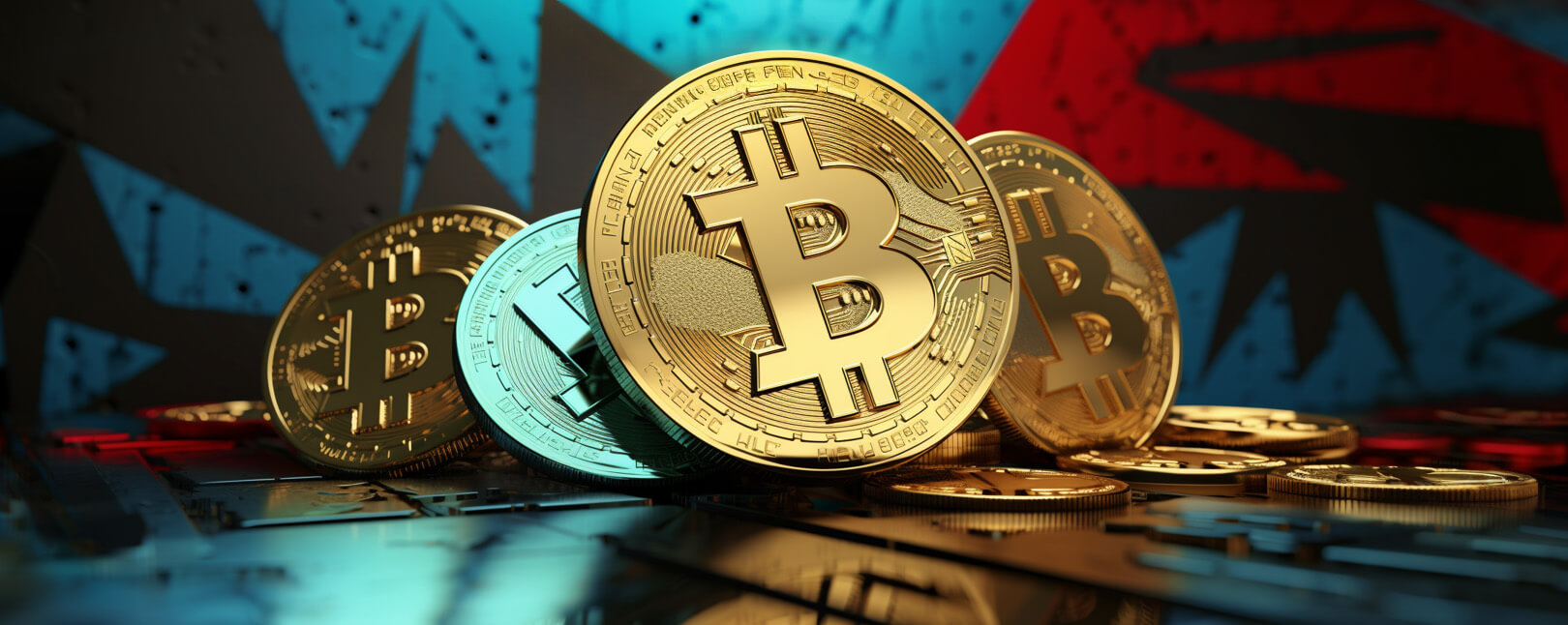What is FTX? In the Wake of the Company’s Collapse, What’s Next for the Blockchain?
FTX was once widely recognized for its innovative approach to cryptocurrency trading. It was one of the largest exchanges in the crypto space, with a valuation of $32 billion as recently as early 2022.
The company was also notable for its aggressive marketing and partnerships strategy. They secured high-profile celebrity endorsements, and even bought naming rights to several sports arenas, spending millions of dollars in the process.
All of these factors made the company’s very public downfall in November 2022 so shocking.
So, what happened? What is FTX’s story? Now that we’ve gained some distance and have the benefit of hindsight, what can the payments space learn from the company’s collapse, and crucially: could it happen again?
Recommended reading
- What is EMV Bypass Cloning? Are Chip Cards Still Secure?
- Dispute Apple Pay Transaction: How Does The Process Work?
- Terminal ID Number (TID): What is it? What Does it Do?
- What is EMV Technology? Definition, Uses, Examples, & More
- Visa Installments: How it Works, Benefits, & Implementation
- dCVV2: How do Cards With Dynamic CVV Codes Work?
What is FTX?
FTX was a cryptocurrency exchange founded by MIT graduates Sam Bankman-Fried and Gary Wang in May 2019. The name “FTX” stood for “Futures Exchange,” and was available to crypto traders in the US, the Bahamas, Japan, Europe, Switzerland, and Hong Kong.
The exchange was built “by traders, for traders.” They offered innovative products, including industry-first derivatives, options, volatility products, and leveraged tokens. Leaders claimed that they strove to develop a platform robust enough for professional trading firms and intuitive enough for first-time users.
One key feature of FTX was its support for a wide array of cryptocurrencies and trading pairs, which gave traders a lot of flexibility. It also offered features aimed at more professional traders, such as the ability to trade futures and leveraged tokens, which are complex financial instruments that can provide traders with exposure to highly leveraged positions.
While platforms like FTX can be powerful tools for traders, they also come with significant risks, even under ideal circumstances. This is especially true when trading complex products like futures and leveraged tokens. Trading cryptocurrencies is highly risky in general, and traders and investors should only engage if they fully understand the risks involved.
Why Did FTX Collapse?
In effect, FTX collapsed due to a lack of liquidity and mismanagement of funds.
Changpeng Zhao, the CEO of rival crypto exchange Binance, tweeted about plans to sell off his company’s stockpile of FTT, a proprietary token issued by FTX, on November 6, 2022:
In effect, this initiated a run on the exchange, with rattled investors making a large, sudden volume of withdrawals. FTX halted all non-fiat customer withdrawals on November 8. Ths same day, Bankman-Fried took to Twitter to explain the exchange’s liquidity issues, and to promise more transparency. However, it was too little, too late.
FTX filed for Chapter 11 bankruptcy protection on November 11, 2022. Bankman-Fried was apprehended in the Bahamas on December 12 before being extradited to the US.
The US Securities and Exchanges Commission (SEC) issued a formal complaint in January 2023. This complaint alleged that Bankman-Fried misappropriated customer funds as his “personal treasury” for private investments, spanning from real estate to political campaign contributions. This was done by funneling money from FTX customers’ accounts and lending it to Alameda Research, an FTX-associated firm.
The Fallout of FTX’s Collapse
After being apprehended, Bankman-Fried pled not guilty to eight different charges. These include wire fraud and conspiring to defraud investors. He is currently awaiting trial as of this writing.
Wang was also charged with defrauding investors in a separate complaint, as was Caroline Ellison, the former CEO of Alameda Research.
The downfall of FTX, and the resulting collapse of FTT, dragged down other cryptocurrencies such as Ethereum and Bitcoin. The price of these coins hit a two-year nadir on November 9. The shockwaves from FTX's collapse even extended to other exchanges, with BlockFi also filing for bankruptcy on November 28.
What is FTX’s Next Step?
The company is still in Chapter 11 bankruptcy proceedings in the US court system. It’s too early to say if anything will be salvaged. However, the outlook is not great, as the company is now considered defunct, and many outstanding debts have yet to be detailed.
The reins of FTX have been handed over to John J. Ray III, who is now serving as the company’s CEO. Ray is known for having steered the notorious energy corporation Enron during its bankruptcy and dissolution about twenty years ago.

Ray unveiled the alarming state of FTX's financial affairs in the bankruptcy filing on November 17. The point of the bankruptcy was an attempt to recoup funds for customers and stakeholders. However, Ray noted a "total collapse of corporate oversight" and a "total lack of reliable financial data."
Here are the key facts as they now stand:
FTX Owes Billions to Investors
On November 19, FTX disclosed its main debtors, the investors, who are due money from the now-collapsed exchange. The total combined debt to its top 50 creditors nears $3.1 billion, with just over half of that sum ($1.45 billion) being owed to the top 10 alone. Based on reports by CNN, the company may have over a million individual debtors and has engaged in discussions with numerous international financial regulators.Assets in Question May Not Exist
John J. Ray III, in the filing, stated that a significant chunk of the assets lodged with FTX could be “absent or illicitly taken.” He cautioned investors against taking the audited financial statements as an accurate reflection of FTX's financial health, stating it wouldn't be “suitable for stakeholders or the Court to trust these as a reliable portrayal of FTX's financial situation.”FTX is Still Taking Inventory
FTX is in the process of assessing its existing assets, and planning either to sell off those assets or restructure them to reimburse investors. The balance sheets, as part of the bankruptcy filing, reveal that FTX's assets are much less valuable than what Bankman-Fried had initially claimed.Users Have No Access to Balances
Users are likely to face difficulties in reclaiming their money in the immediate future. The bankruptcy proceedings were set in motion on November 22, 2022. However, many investors who held assets on FTX are still unable to withdraw their funds from the platform.How Has the FTX Collapse Impacted Crypto Payments?
The FTX fiasco has amplified the volatility and risk associated with crypto, which was already grappling with declining investor trust due to falling trade values. This incident has led many companies to reconsider their plans of integrating crypto payments into their platforms.
None of this is especially “good” news for cryptocurrency in general. However, there may be a silver lining. FTX’s collapse presents an opportunity for the market to take stock and realign its priorities. Some experts argue that such an event would not have occurred with proper regulatory measures akin to those governing traditional banks.
Crypto initially appealed to users for its peer-to-peer, decentralized transactions, devoid of major financial institutions' involvement. However, with the rise of exchanges like FTX, this dynamic shifted. Crypto platforms have evolved into substantial financial entities in their own right, but minus the regulatory oversight or insurance prerequisites.
Many experts maintain that the future of digital commerce lies with blockchain and crypto payments. However, it may likely take the form of stablecoins or Central Bank Digital Currencies (CBDCs). These coins retain a fixed value and are meant for transactions, rather than investments. Tethering crypto tokens to a fiat currency, or to an asset or commodity, helps stabilize their value. There would not be sudden, drastic value fluctuations resulting from external shocks.
3 Forecasts for Crypto Payments
From a governmental and institutional perspective, cryptocurrency remains volatile because it isn’t regulated. For some traders and VC crypto investment funds, this lack of regulation and central authority is the point of purchasing them in the first place. However, some degree of regulation and structure will be necessary if crypto payments are ever going to see widespread adoption.
The meteoric rise and fall of FTX is a cautionary tale that could provide critical insight for a more stable market. Some of the moves we can expect in the near future might include:
#1 | Regulation
In 2022, the United States unveiled a novel structure that cleared the path for further industry supervision. This innovative commandment shifted authority towards already established market overseers like the Securities and Exchange Commission (SEC) and the Commodity Futures Trading Commission (CFTC).
Notably, the SEC had already begun its foray into the realm of crypto regulation, gaining significant attention with its lawsuit against Ripple. The company was accused of amassing over $1.3 billion through the sale of its indigenous token, XRP, in transactions that did not comply with securities registration norms. Lately, the SEC has trained its sights on exchanges, scrutinizing their crypto offerings. Gary Gensler, the Chairman of the SEC, has been forthright in his perspective on cryptocurrency, describing it as "a wild west” environment.
"The crypto markets are by no means incompatible with securities law,” Gensler stated. “The safeguarding of investors holds equal importance, irrespective of the underpinning technologies."
In the ensuing years, we should expect a stern approach from US regulators towards cryptocurrency, aiming to curb the relentless influx of new coins. The result of the SEC's litigation against Ripple Labs, coupled with its initiatives to control crypto exchanges, will probably be a key determinant in the classification of cryptocurrencies as securities.
#2 | Consolidation
A period of consolidation in the crypto arena is essentially a time when traders and investors assess the future trajectory of cryptocurrencies. Alternatively, it could be that investors are biding their time, waiting for optimal conditions to either buy or sell their holdings. Many perceive the crypto consolidation phase as a market readjustment following the colossal surge in prices over recent years.
A multitude of new businesses and initiatives cropped up in the aftermath of the 2018 crypto surge (and subsequent plunge). FTX was just one of these. The prevailing anticipation is that the number of entities and coins floating in the crypto space will drastically thin out as the market matures.
#3 | Innovation
Despite the current lull in crypto markets and its consequential strain on investors, it’s likely that the digital asset industry will weather the storm.
The impact of blockchain, Bitcoin, and distributed ledger technology (DLT) extends far beyond just cryptocurrencies and their role in the financial realm. One promising application of DLT is its integration into the innovation cycle, potentially revolutionizing how individuals and businesses acquire, safeguard, and commercialize their intellectual assets. More importantly, this technology could be instrumental for governments and policymakers in creating a more equitable and innovative society.
Blockchain can aid in overcoming obstacles to intellectual property rights (IPR) protection and enforcement, for example. Protecting trademarks, patents, copyright, design rights, database rights, and trade secrets is crucial to a digital economy. IPRs are often underrated, underutilized, and widely misunderstood, though, largely due to the intricate and antiquated processes required for their filing, management, and protection.
Web3 advocates envision a blockchain-powered internet. Many are hopeful that the downturn following FTX’s collapse will clear the path for more innovative blockchain applications.
Moving Forward
So, what implications does this hold for the future of crypto regulations? What does the forthcoming regulatory horizon appear like?
According to a recent report from Amundi chief investment officer Vincent Mortier and macroeconomist Tristan Perrier, “Blockchains, cryptocurrencies, and tokenization do have a lot of potential, be it in powering new types of decentralized organizations that can offer serious economic and social advantages or in enabling new ways of trading and managing assets. The most likely outcome is that they will simply need more time to mature before becoming mainstream, as was the case for other technologies in the past.”
A degree of regulatory reinforcement seems inevitable. Yet, this could also be seen as a positive development as it could bolster trust within the industry and foster a sense of security and protection among investors. It could be argued that the only definite route to worldwide acceptance truly lies in reinstating confidence by setting robust legal frameworks. This will prevent a repeat of disappointments such as the FTX incident.
FAQs
What does “FTX” stand for?
“FTX” stands for “Futures Exchange.” It is the name of a popular cryptocurrency exchange that filed for bankruptcy in 2022.
Why did FTX fail?
The downfall of FTX can be attributed to a scarcity of liquid assets and mishandling of funds, compounded by a surge of withdrawals from unnerved investors. The value of the exchange’s proprietary FTT token nosedived. This dragged down other cryptocurrencies such as Ethereum and Bitcoin, which hit a two-year nadir as of November 9. The shockwaves from FTX's collapse extended to other exchanges, with BlockFi also filing for bankruptcy on November 28.
Will I get my money back from FTX?
Unfortunately, if FTX's assets are insufficient to cover all the claims against it, some creditors will not receive repayment. This means it is possible that account holders who lost money may not be made whole. Thus far, the company has returned $7.3 billion to investors and traders, but there are still many billions of dollars more left unaccounted for.
Did everyone using FTX lose their money?
Not everyone. As mentioned above, $7.3 billion has been recovered so far. However, there are no guarantees that everyone who invested will get their money back.
Is crypto a safe payment method?
Yes. Generally speaking, so long as you choose a trusted platform on which to conduct transactions, and store your coins in a secure wallet, your transactions are considered safe.














